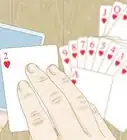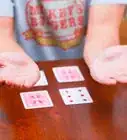This article was co-authored by wikiHow Staff. Our trained team of editors and researchers validate articles for accuracy and comprehensiveness. wikiHow's Content Management Team carefully monitors the work from our editorial staff to ensure that each article is backed by trusted research and meets our high quality standards.
This article has been viewed 178,792 times.
Learn more...
Tonk (or Tunk) is a fast-moving card game that’s pretty easy to learn. First, you need the right number of players and cards. From there, you need to agree to stakes and decide who deals first to get started. Once you start playing a hand, you have an immediate chance to win if your cards equal a Tonk. Otherwise, there are a number of different ways that you can win if you need to play the hand further.
Steps
Organizing Your Game
-
1Gather enough people to play. At the very least, find one other person to play you in a one-on-one contest. If more people are available, include up to five others in a game, for a total of six players.[1]
-
2Make sure your deck is full. Either use a brand new pack fresh out of its wrapping, or double-check your old one to confirm that all cards are there. Either way, make sure you’re starting off with all 52 cards that make up a standard deck. [2] A full deck should include:[3]
- Four “suits:” clubs, diamonds, hearts and spades.
- 13 cards per suit: ace, two, three, four, five, six, seven, eight, nine, ten, jack, queen, and king.
Advertisement -
3Discard the jokers. Expect a standard 52-card deck to also include two jokers. However, you won’t need these to play Tonk. Weed them out from the deck and set them aside before you begin.[4]
-
4Settle on the stakes if gambling. If you’re playing for money, establish what the stakes will be for each hand played per game before the game begins. Expect one game to include at least a few hands. Also bear in mind that stakes can be doubled during each game, so take that into account before agreeing to the basic stake played per hand.[5]
-
5Cut cards to settle on who deals first. Have each player draw one card from the deck. Then lay your cards out on the table. Assign the first deal to whoever has the highest card.[6]
- Aces vary between being the highest and lowest card from game to game. In Tonk, however, aces are always the lowest.
-
6Deal the first hand. When dealing, give each player five cards. Keep them facing down so no one can see each other’s cards. Deal each card individually so you don’t accidentally deal more cards than intended to any one player.[7]
- Five cards per player isn’t a hard-and-fast rule. Some people deal as little as three, while others go with seven or even as many as twelve. Feel free to adjust the amount however you see fit.[8]
Playing Each Hand
-
1Count the value of your cards. Once you’ve been dealt all your cards, gather them up and inspect them, being careful to not let the others see. Add the numerical values of the cards in your hand to find their total. In Tonk, the numerical values are:[9]
- One point for aces.
- Ten points for all picture cards (the jack, queen, and king)
- The face value for numerical cards (for example, a two of hearts equals two points).
-
2Declare Tonk if you have one. If the cards in your hand add up to a total of 50 points, declare Tonk right away. This means you win the hand automatically without any further play. It also means that you win double the agreed-upon stakes per hand. However:[10]
- It is possible that another player may also have 50 points and thus declare Tonk, too. In this case, no one wins, and the hand is over.
-
3Start a stock- and discard pile if there aren’t any Tonks. If no player declares Tonk, have the dealer place the stack of undealt cards facedown on the table. This is your stockpile. Now flip the topmost card over. Set it facing upward right beside your stockpile. This is now the beginning of your discard pile.[11]
-
4Play clockwise from the dealer. Have the player seated to the dealer’s left go first. Let them draw a single card from either the stockpile or the discard pile. Wait for them to discard either that same card or another one from their hand. Then have the player seated to their left do the same, and so on for the rest of the hand.[12]
- Whenever a player discards, they must place the card face up on the discard pile, just like the card that started that pile, so the next player can see what it is.
-
5Create “spreads.” As you draw and discard cards, keep those that will form either a “book” or “run.” To make a “book,” collect three or more of the same card from each suit. To make a “run,” collect three or more sequential cards within one suit. Whenever you have enough cards to make either one, “spread” those cards out on the table immediately and hold onto the others in your hand.[13]
- An example of a book would be three kings of any suit.
- A run, on the other hand, would be something like the two, three, and four of spades.
-
6Build on existing spreads. Once a spread is down on the table, use the cards that you draw next to add to it whenever possible. Don’t limit yourself to spreads that you personally started. Feel free to build on other players’ spreads as well.[14]
- Let’s say you or another play spread out a book of three queens: the diamond, the club, and the heart. If you draw the queen of spades, discard one of the other cards in your hand and then set the queen down separately from any other cards you’ve already played.
- Now let’s say that there is a run on the table: the five, six, and seven of hearts. If you draw either the four or eight of hearts next, play that.
Winning Each Hand
-
1Empty your hand first. As you draw, discard, and form spreads, aim to beat the other players at it so that you lay down your last card before anyone else can do the same. Don’t hold on to cards unnecessarily. If you have a chance to start or add to the spread, do so immediately.[15]
-
2“Drop” to try winning before you empty your hand. If you’re confident that the total value of the cards you’re holding will be lower than the other players’, tell them to “drop” their cards. Lay all your cards out to be seen by each other. If your total value is in fact lower than the rest, collect the basic stakes from each player.[16]
- If not, you must pay out the basic stakes to each player with a lower value than yours without collecting from the others. Also, whoever has the lowest value is the de facto winner, which means they collect the basic stakes from each player. This means you end up losing double stakes to that player.
- Dropping is another aspect of Tonk that can vary from one game to the next. Some people are accustomed to only allowing this play immediately after the cards are dealt if no one declares “Tonk.” Others will allow it at any time afterward.
- If someone objects to you “dropping” later in the hand, defer to them, since they may have had the opportunity to drop earlier and didn’t take it because they’re accustomed to different rules. Then decide between yourselves how to proceed with future hands.
-
3Use card values to determine the winner if the stockpile runs out. If the hand lasts longer than the stockpile, lay your cards out. Calculate the total value of your cards. Collect or pay out the basic stakes according to whoever has the lowest value.[17]
Community Q&A
-
QuestionCan I pick up more than one card from the discard pile?
 Community AnswerNo, you are only allowed to pick up one card from the discard pile. Count how many players are in the game and subtract one, and that is how far you are allowed to go in the discard pile for a card. For example, 6 players, 6 - 1 = 5, you can only get 1 card of the last 5 cards dropped.
Community AnswerNo, you are only allowed to pick up one card from the discard pile. Count how many players are in the game and subtract one, and that is how far you are allowed to go in the discard pile for a card. For example, 6 players, 6 - 1 = 5, you can only get 1 card of the last 5 cards dropped. -
QuestionWhen the last card is drawn from the pile and that person discards, can the next person still get one more turn to pick when playing Tonk?
 Community AnswerThe game stops and total card value is counted when the last card is discarded, and no other player can use it.
Community AnswerThe game stops and total card value is counted when the last card is discarded, and no other player can use it. -
QuestionCan I collect Tonk double pay on a six-card spread?
 Community AnswerYes, two books or a 6-card run is acceptable for a 6-card Tonk at any time during a game.
Community AnswerYes, two books or a 6-card run is acceptable for a 6-card Tonk at any time during a game.
wikiHow Video: How to Play Tonk
References
- ↑ https://www.gamblingsites.com/skill-games/tonk/
- ↑ https://www.gamblingsites.org/gambling/skill-games/tonk/
- ↑ https://boardgamegeek.com/wiki/page/standard_deck_playing_card_games
- ↑ http://www.bicyclecards.com/how-to-play/tunk/
- ↑ https://www.gamblingsites.org/gambling/skill-games/tonk/
- ↑ https://www.gamblingsites.org/gambling/skill-games/tonk/
- ↑ https://www.gamblingsites.org/gambling/skill-games/tonk/
- ↑ https://www.gamblingsites.com/skill-games/tonk/
- ↑ https://www.gamblingsites.com/skill-games/tonk/
- ↑ https://www.gamblingsites.org/gambling/skill-games/tonk/
- ↑ https://www.gamblingsites.org/gambling/skill-games/tonk/
- ↑ https://www.gamblingsites.org/gambling/skill-games/tonk/
- ↑ https://www.gamblingsites.com/skill-games/tonk/
- ↑ https://www.gamblingsites.com/skill-games/tonk/
- ↑ https://www.gamblingsites.com/skill-games/tonk/
- ↑ https://www.gamblingsites.com/skill-games/tonk/
- ↑ https://www.gamblingsites.com/skill-games/tonk/
About This Article
Tonk is a fun 2-6 player card game where everyone tries to be the first one to run out of cards by playing spreads. To play, first deal 7 cards face down to each player. Place the rest of the cards in the middle of the table to make the stock pile. Flip the top card face up next to it to make the discard pile. In Tonk, aces are worth 1 point, face cards are worth 10 points, and the rest of the cards are worth their face value. If the cards in a player’s hand add up to 50 points, they automatically win that round. Otherwise, the player to the dealer’s left goes first. On a player’s turn, they can either draw from the stock pile or take the top face-up card on the discard pile. They then discard one card from their hand. Play continues clockwise around the table. Players are trying to collect cards that help them create “spreads.” A spread can be either a “book,” which is 3 or more cards of the same rank, or a “run,” which is 3 or more sequential cards in the same suit. When a player is able to make a spread, they play the cards in the spread face up on the table in front of them. Players can also play off of existing spreads on the table. For example, if one player plays a book made up of 3 queens, another player could play 1 queen on that book during their turn. Whoever plays all of the cards in their hand first wins the round. The rest of the players add up the point values of all of the cards left in their hands and add that to their total score. Then, a new round begins. Once a player reaches 100 points, they’re out. The last player standing wins the game! To learn how to gamble while playing tonk, read on!
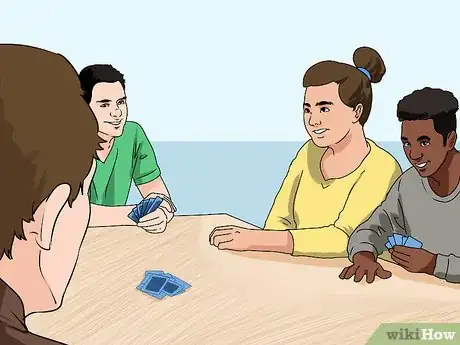
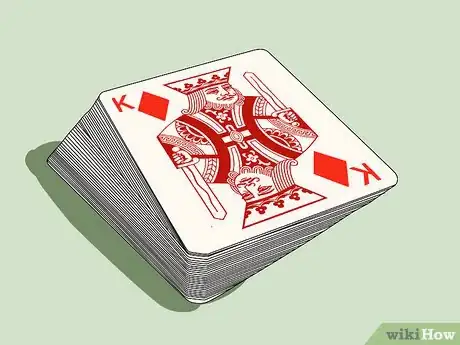
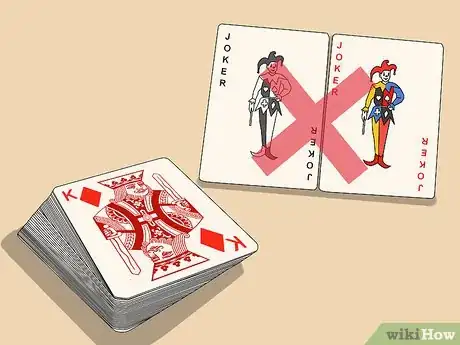




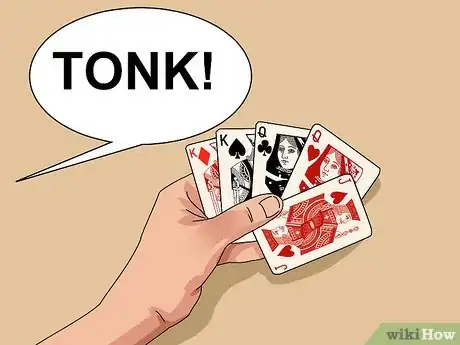
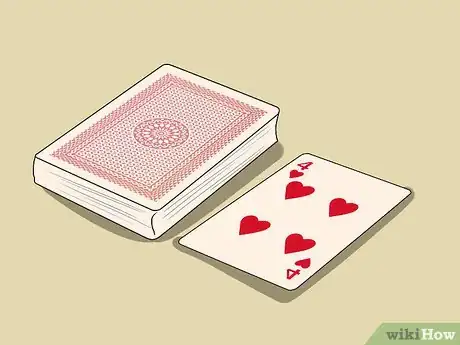
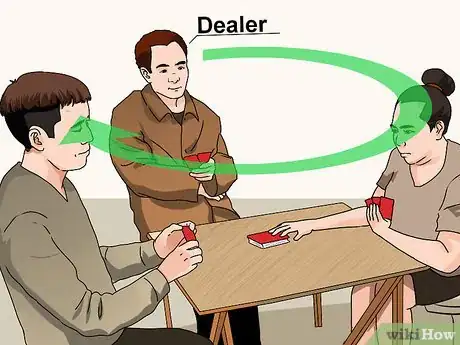
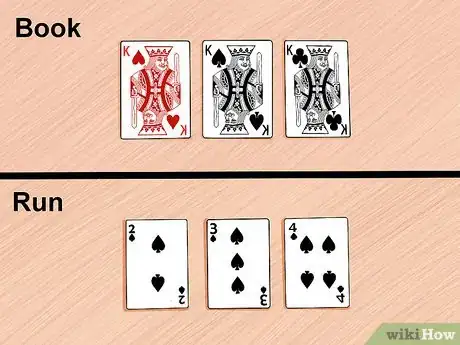
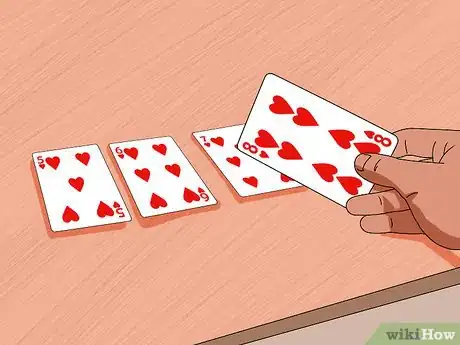

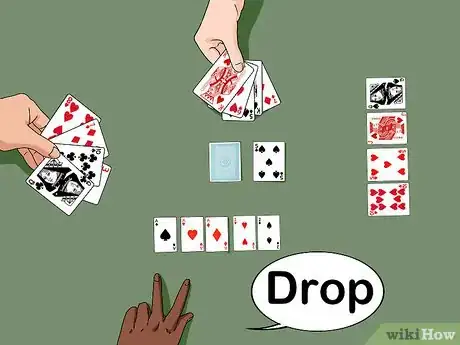



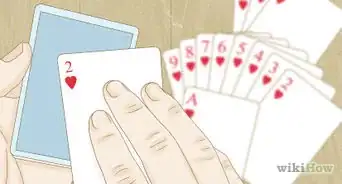
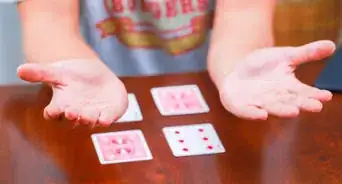


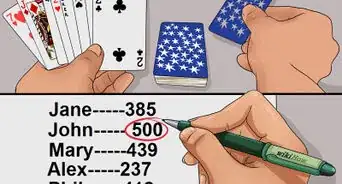


-Step-7-Version-3.webp)

-Step-7.webp)










